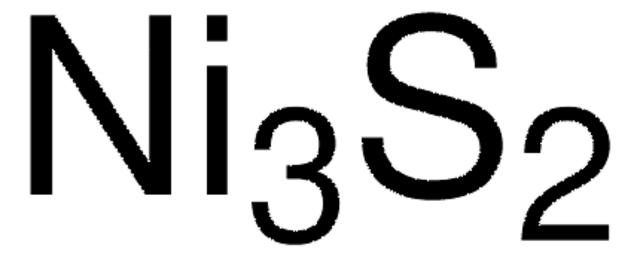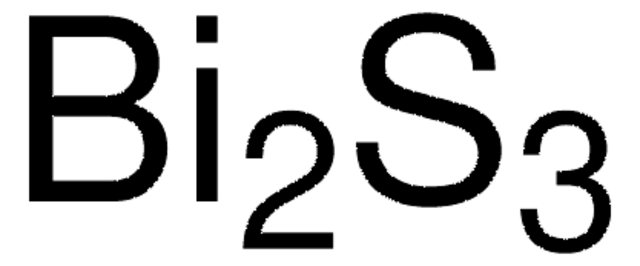342467
Copper(II) sulfide
powder, −100 mesh, ≥99% trace metals basis
Synonym(s):
Copper Blue, Copper monosulfide, Cupric sulfide, Horace Vernet′s Blue
Sign Into View Organizational & Contract Pricing
All Photos(3)
About This Item
Empirical Formula (Hill Notation):
CuS
CAS Number:
Molecular Weight:
95.61
EC Number:
MDL number:
UNSPSC Code:
12352300
PubChem Substance ID:
NACRES:
NA.23
Recommended Products
assay
≥99% trace metals basis
form
powder
particle size
−100 mesh
mp
220 °C (dec.) (lit.)
density
4.6 g/mL at 25 °C (lit.)
application(s)
battery manufacturing
SMILES string
S=[Cu]
InChI
1S/Cu.S
InChI key
BWFPGXWASODCHM-UHFFFAOYSA-N
Looking for similar products? Visit Product Comparison Guide
General description
Cu63 NMR, X ray photoelectron spectroscopy,2 copper sulfide CuS was studied in detail.
Packaging
Packaged in glass bottles
Storage Class
11 - Combustible Solids
wgk_germany
WGK 3
flash_point_f
Not applicable
flash_point_c
Not applicable
ppe
Eyeshields, Gloves, type N95 (US)
Choose from one of the most recent versions:
Already Own This Product?
Find documentation for the products that you have recently purchased in the Document Library.
A {Cu2S}2+ mixed-valent core featuring a Cu-Cu bond.
Stéphane Torelli et al.
Angewandte Chemie (International ed. in English), 49(44), 8249-8252 (2010-09-21)
Chunyan Wu et al.
Nanotechnology, 24(4), 045402-045402 (2013-01-10)
Here we report the fabrication of a novel photovoltaic device based on CuS nanotubes (CuSNTs) and indium tin oxide (ITO) Schottky junctions. Large-quantity synthesis of CuSNTs was accomplished via a solution-based sacrificial template method under moderate conditions, while ITO Schottky
Min Zhou et al.
Journal of the American Chemical Society, 132(43), 15351-15358 (2010-10-15)
We synthesized and evaluated a novel class of chelator-free [(64)Cu]CuS nanoparticles (NPs) suitable both for PET imaging and as photothermal coupling agents for photothermal ablation. These [(64)Cu]CuS NPs are simple to make, possess excellent stability, and allow robust noninvasive micro-PET
Marco Zanella et al.
Chemical communications (Cambridge, England), 47(1), 203-205 (2010-10-05)
Recently (Baranov et al., Nano Lett., 2010, 10, 743) we demonstrated that depletion attraction between semiconductor nanorods in solution can be employed for both their self-assembly and their separation from spherical nanoparticles. Here we show that depletion attraction can be
Mrinmoyee Basu et al.
Environmental science & technology, 44(16), 6313-6318 (2010-08-14)
Blue solution of copper(II) acetylacetonate complex, [Cu(acac)(2)] in dichloromethane (DCM) and an aqueous alkaline solution of thioacetamide (TAA) constitute a biphasic system. The system in a screw cap test tube under a modified hydrothermal (MHT) reaction condition produces a greenish
Our team of scientists has experience in all areas of research including Life Science, Material Science, Chemical Synthesis, Chromatography, Analytical and many others.
Contact Technical Service







